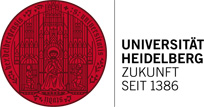Near and Middle Eastern Studies
Course outline
Course structure
Main research interests
Formalia
Academic advisor
Contact
| Degree | Master of Arts |
| Application required | access-restricted |
| Course commences | winter semester only |
| Standard course duration | 4 semesters |
| Format options | full-time only |
| Language requirements | English, French (on application); further requirements depending on focus option (on application) |
| Language of instruction | German |
| Other features | postgraduate / consecutive |
Course outline
This M.A. course involves scholarly engagement with the world of Islam from Muhammad to the present on the basis of knowledge of the languages of the Islamic civilisation. Islam first materialised within the Arabic language community, soon spreading from there to peoples speaking non-Semitic languages. These peoples made a significant contribution to Islamic civilisation. Today the Islamic world encompasses regions in Europe, Asia and Africa from the Atlantic coast to the Philippines and the shores of East Africa to the great rivers of Siberia. The historical core centres of the Islamic world, like the Arabian Peninsula, Greater Syria, Mesopotamia, Egypt, Iran and Afghanistan, Anatolia and parts of Central Asia are areas where Arabic and Turkish/Persian are spoken.
Thematically, the course covers a wide range of methods and topics deriving from the close investigation of the history, religions, languages, politics, societies, economies, legislations, philosophy, art, archaeology and historical area studies of the Islamic world.
In the attempt to get to grips with the complexity and diversity of the subject matter involved, teaching and research at Heidelberg University has opted for a three-way distribution of emphasis both geographically and in terms of content. In the framework of the M.A. programme on Near and Middle Eastern Studies, study emphasis is determined by the choice of one of three possible options. These are
- Arabic. The subject matter at the heart of this option is the religious, literary and social history of the Arab world from the 6th/7th century to the present, with geographical emphasis on the countries of the Near East (including Egypt). An essential prerequisite for this option is a command of High Arabic which is indispensable for the understanding of and engagement with classical and modern texts. In addition, students will be assumed to have a knowledge of the different stylistic registers of both modern and classical Arabic and to be familiar with other Oriental source languages (Turkish, Persian).
- Ottoman. The subject matter in this study option is the history and culture of the Ottoman Empire and adjacent areas in Southeast Europe, Caucasia and Iran. Of central concern are the administrative, economic and social history of the so-called “post-classical” age (as of ca.1600), documentology and palaeography, and the history of ideas in the 19th and 20th centuries. Students will need to be familiar with Turkish as spoken in Turkey, to embark on the acquisition of advanced proficiency in Ottoman and also have a knowledge of other Oriental source languages (Arabic, Persian).
- Persian. This option focuses on the languages and culture of Iran, with special reference to the Islamic period. Of central significance is the connectivity between the Islamic Persian-speaking area and neighbouring civilisations (Arab world, Ottoman world) and their interaction. Accordingly, a good working knowledge of modern Persian is essential, backed up either by familiarity with its prior historical stages, the knowledge of another language spoken in Iran, or knowledge of other Oriental source languages (Turkish, Arabic).
Course structure
The M.A. programme in Near and Middle Eastern Studies is made up of linguistic and research-oriented modules.
In the first three semesters, students learn a third Near Eastern source language for which tuition is offered by the Institute. It must not be identical with the source languages for which students submitted evidence of proficiency when applying for admission to the course.
At the same time, students are given the opportunity in the first and second semesters to deepen and extend their knowledge of the language underlying their respective study option.
These linguistic modules are the foundation for intensive engagement with research issues in the respective study option. In the framework of six seminars (distributed across two modules in the first and second/third semester) students are equipped with the knowledge and methodologies required to immerse themselves independently in specific research issues concerning their subject as a whole and their chosen option in particular. Of central import is the engagement with source-language material. One of the two advanced seminars attended in each of the first three semesters is a so-called source or text seminar focusing on philological approaches and skills.
The fourth semester is given over to completion of the M.A. thesis and the final oral examination.
Subsidiary (minor) subject
The M.A. course in Near and Middle Eastern Studies can also be selected as a subsidiary (minor) subject accounting for 20 CP.
Main research interests
Arabic
- literature in the Middle Ages and the modern age (poetry, adab, maqama, short story, autobiography)
- origination and development of Islam (and Islamism)
- history (and social history) with special emphasis on Egypt/Syria/Lebanon/Palestine/Iraq
- modern history of the Arab countries
Ottoman
- provincial history of the Ottoman Empire, notably Balkan countries, with an emphasis on the early 19th century
- Ottoman documentology and palaeography
- non-Muslims in Islamic societies
- historiography in the late Ottoman Empire
- history of newspapers and the press in the Ottoman Empire, Iran and Russia
Persian
- culture and history of the Persian-speaking area, focusing on the Islamic period
- modern Persian literary studies
- ancient Persian inscriptions
- middle and old Persian linguistics
Formal requirements
Admission
Access to the course is restricted. The current Admission Regulations are available here.
Prospective students from Germany
Prospective students from Germany can enrol without prior application at the Central University Administration building by the beginning of the lecture period. To matriculate, they are required to show a written statement of admission issued by the representative of the Master’s programme they wish to attend, confirming that the requirements set out in the Admission Regulations have been met. Please apply to the Department of Languages and Cultures of the Near East for further information on how to proceed.
International prospective students
Prospective students from other countries must apply in writing, so that their previous academic record can be verified. The deadline for international applicants is 15 June. Applications must be addressed directly to the International Relations Office. Please use the M.A. application form here and enclose the necessary documents.
Further information
Current information on procedure
Study and examination regulations
Examination regulations M.A. (20 February 2008)
Examinations board
Issues arising in connection with examinations, credit transfer and academic credential recognition are dealt with by the relevant examinations board/office. For more information, consult the academic advisor(s) indicated below.
Fees
Tuition fees at Heidelberg University are payable at the beginning of each semester.
Academic advisor
Johannes Zimmermann, M.A.
Albert-Ueberle-Str. 3-5, Office 253
phone: +49 (0)6221 543582
e-mail: johannes.zimmermann@ori.uni-heidelberg.de
Office hours: Tuesdays 11 am to 1.30 pm in term-time.
Prior notification requested (secretaries’ office Islamic Studies, see below)
Contact
Department for the Languages and Cultures of the Near East
Albert-Ueberle-Str. 3-5
D-69120 Heidelberg
Secretaries
Patricia Roth
phone: +49 (0)6221 542969
fax: +49 (0)6221 542963
e-mail: sekretariat@ori.uni-heidelberg.de
Internet: www.islamwissenschaft.uni-hd.de/

